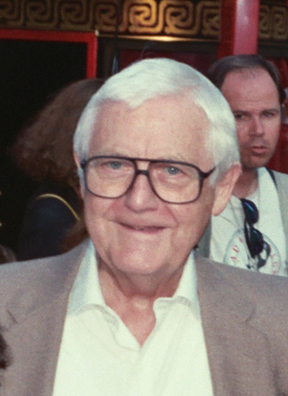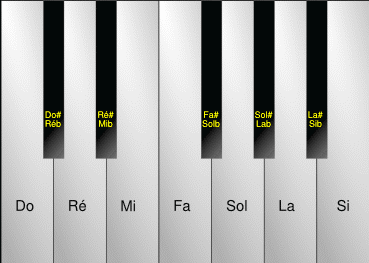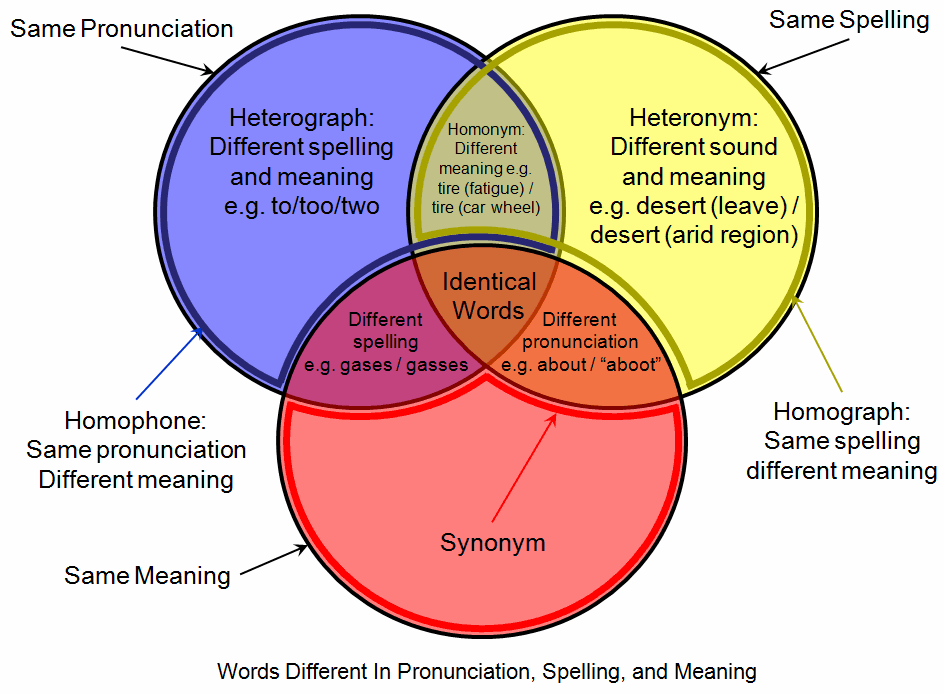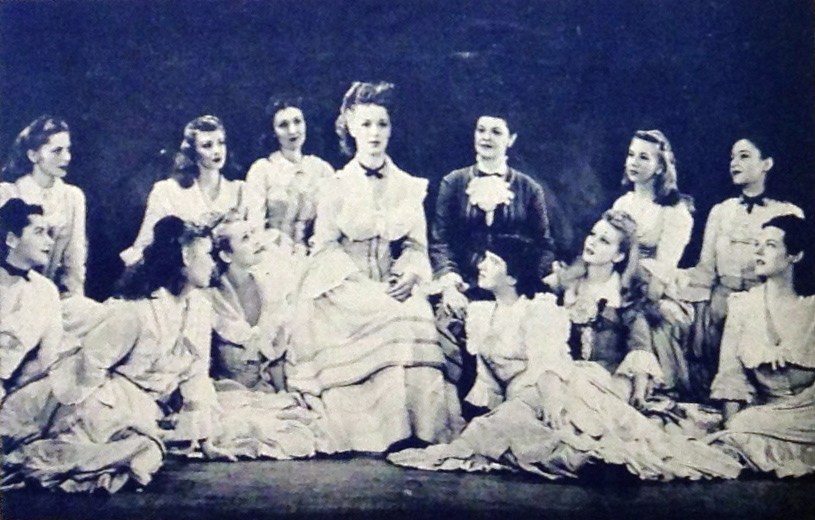|
Do-Re-Mi
"Do-Re-Mi" is a show tune from the 1959 Rodgers and Hammerstein musical ''The Sound of Music''. Each syllable of the musical solfège system appears in the song's lyrics, sung on the pitch it names. Rodgers was helped in its creation by long-time arranger Trude Rittmann who devised the extended vocal sequence in the song. The tune finished at #88 in AFI's 100 Years...100 Songs survey of the top tunes in American cinema in 2004. Background Within the story of ''The Sound of Music'', it is used by the governess Maria to teach the solfège of the major musical scale to the Von Trapp children, who learn to sing for the first time. According to assistant conductor Peter Howard, the heart of the number—in which Maria assigns a musical tone to each child, like so many Swiss bell ringers—was devised in rehearsal by Rittmann (who was credited for choral arrangements) and choreographer Joe Layton. The fourteen note and tune lyric—'when you know the notes to sing...'—were provid ... [...More Info...] [...Related Items...] OR: [Wikipedia] [Google] [Baidu] |
The Sound Of Music
''The Sound of Music'' is a musical with music by Richard Rodgers, lyrics by Oscar Hammerstein II, and a book by Howard Lindsay and Russel Crouse. It is based on the 1949 memoir of Maria von Trapp, '' The Story of the Trapp Family Singers''. Set in Austria on the eve of the ''Anschluss'' in 1938, the musical tells the story of Maria, who takes a job as governess to a large family while she decides whether to become a nun. She falls in love with the children, and eventually their widowed father, Captain von Trapp. He is ordered to accept a commission in the German Navy, but he opposes the Nazis. He and Maria decide on a plan to flee Austria with the children. Many songs from the musical have become standards, including " Do-Re-Mi", " My Favorite Things", " Edelweiss", " Climb Ev'ry Mountain", and the title song " The Sound of Music". The original Broadway production, starring Mary Martin and Theodore Bikel, opened in 1959 and won five Tony Awards, including Best Musical, ... [...More Info...] [...Related Items...] OR: [Wikipedia] [Google] [Baidu] |
The Sound Of Music (film)
''The Sound of Music'' is a 1965 American Musical film, musical Drama (film and television), drama film produced and directed by Robert Wise from a screenplay written by Ernest Lehman, and starring Julie Andrews and Christopher Plummer, with Richard Haydn, Peggy Wood, Charmian Carr, and Eleanor Parker. The film is an adaptation of The Sound of Music, the 1959 stage musical composed by Richard Rodgers, with lyrics by Oscar Hammerstein II and a book by Lindsay and Crouse. It is based on the 1949 memoir ''The Story of the Trapp Family Singers'' by Maria von Trapp and is set in Salzburg, Austria. It is a fictional retelling of her experiences as governess to seven children, her eventual marriage with their father Captain Georg von Trapp, and their escape during the Anschluss in 1938. Filming took place from March to September 1964 in Los Angeles and Salzburg. ''The Sound of Music'' was released in the United States on March 2, 1965, initially as a limited roadshow theatrical releas ... [...More Info...] [...Related Items...] OR: [Wikipedia] [Google] [Baidu] |
Solfège
In music, solfège (British English or American English , ) or solfeggio (; ), also called sol-fa, solfa, solfeo, among many names, is a mnemonic used in teaching aural skills, Pitch (music), pitch and sight-reading of Western classical music, Western music. Solfège is a form of solmization, though the two terms are sometimes used interchangeably. Syllables are assigned to the notes of the Scale (music), scale and assist the musician in Gordon music learning theory#Audiation, audiating, or mentally hearing, the pitches of a piece of music, often for the purpose of singing them aloud. Through the Renaissance music, Renaissance (and much later in some shapenote publications) various interlocking four-, five- and six-note systems were employed to cover the octave. The tonic sol-fa method popularized the seven syllables commonly used in English-speaking countries: ''do'' (spelled ''doh'' in tonic sol-fa),''Oxford English Dictionary'' 2nd Ed. (1998) ''re'', ''mi'', ''fa'', ''so(l)'' ... [...More Info...] [...Related Items...] OR: [Wikipedia] [Google] [Baidu] |
Homophone
A homophone () is a word that is pronounced the same as another word but differs in meaning or in spelling. The two words may be spelled the same, for example ''rose'' (flower) and ''rose'' (past tense of "rise"), or spelled differently, as in ''rain'', ''reign'', and ''rein''. The term ''homophone'' sometimes applies to units longer or shorter than words, for example a phrase, letter, or groups of letters which are pronounced the same as a counterpart. Any unit with this property is said to be ''homophonous'' (). Homophones that are spelled the same are both homographs and homonyms. For example, the word ''read'', in "He is well ''read''" and in "Yesterday, I ''read'' that book". Homophones that are spelled differently are also called heterographs, e.g. ''to'', ''too'', and ''two''. Wordplay and games Homophones are often used to create puns and to deceive the reader (as in crossword puzzles) or to suggest multiple meanings. The last usage is common in poetry and creat ... [...More Info...] [...Related Items...] OR: [Wikipedia] [Google] [Baidu] |
Salzburg
Salzburg is the List of cities and towns in Austria, fourth-largest city in Austria. In 2020 its population was 156,852. The city lies on the Salzach, Salzach River, near the border with Germany and at the foot of the Austrian Alps, Alps mountains. The town occupies the site of the Roman settlement of ''Iuvavum''. Founded as an episcopal see in 696, it became a Prince-Archbishopric of Salzburg, seat of the archbishop in 798. Its main sources of income were salt extraction, trade, as well as gold mining. The Hohensalzburg Fortress, fortress of Hohensalzburg, one of the largest medieval fortresses in Europe, dates from the 11th century. In the 17th century, Salzburg became a centre of the Counter-Reformation, with monasteries and numerous Baroque churches built. Salzburg has an extensive cultural and educational history, being the birthplace of Wolfgang Amadeus Mozart and being home to three universities and a large student population. Today, along with Vienna and the Tyrol (st ... [...More Info...] [...Related Items...] OR: [Wikipedia] [Google] [Baidu] |
Richard Rodgers
Richard Charles Rodgers (June 28, 1902 – December 30, 1979) was an American Musical composition, composer who worked primarily in musical theater. With 43 Broadway theatre, Broadway musicals and over 900 songs to his credit, Rodgers was one of the best-known American composers of the 20th century, and his compositions had a significant influence on popular music. Rodgers is known for his songwriting partnerships, first with lyricist Lorenz Hart and then with Oscar Hammerstein II. With Hart he wrote musicals throughout the 1920s and 1930s, including ''Pal Joey (musical), Pal Joey'', ''A Connecticut Yankee (musical), A Connecticut Yankee'', ''On Your Toes'' and ''Babes in Arms.'' With Hammerstein he wrote musicals through the 1940s and 1950s, such as ''Oklahoma!'', ''Flower Drum Song'', ''Carousel (musical), Carousel'', ''South Pacific (musical), South Pacific'', ''The King and I'', and ''The Sound of Music''. His collaborations with Hammerstein, in particular, are celebr ... [...More Info...] [...Related Items...] OR: [Wikipedia] [Google] [Baidu] |
1959 In Music
This is a list of notable events in music that took place in the year 1959. Specific locations * 1959 in British music * 1959 in Norwegian music Specific genres * 1959 in country music * 1959 in jazz Events *January 5 – The first sessions for Ella Fitzgerald's '' George and Ira Gershwin Songbook'' are held. *January 12 – Tamla Records is founded by Berry Gordy Jr. in Detroit, Michigan. *January 22 – Buddy Holly records some acoustic demos in his New York City apartment, the last songs he will record. Songs included "Peggy Sue Got Married", "Crying, Waiting, Hoping", "Learning the Game", "What to Do", "That's What They Say", and "That Makes It Tough." *January 29 – The first Melodifestivalen, an annual Swedish music competition that determines the country's representative for the Eurovision Song Contest, is held in Stockholm. *February 3 – "The Day the Music Died": Buddy Holly, Ritchie Valens and The Big Bopper are killed in a plane crash in Iowa. Future country star ... [...More Info...] [...Related Items...] OR: [Wikipedia] [Google] [Baidu] |
Rodgers And Hammerstein
Rodgers and Hammerstein was a theater-writing team of composer Richard Rodgers (1902–1979) and lyricist-dramatist Oscar Hammerstein II (1895–1960), who together created a series of innovative and influential American musicals. Their musical theater writing partnership has been called the greatest of the 20th century. Their popular Broadway productions in the 1940s and 1950s initiated what is considered the "golden age" of musical theater. Gordon, John Steele''Oklahoma!''. Retrieved June 13, 2010 Five of their Broadway shows, ''Oklahoma!'', '' Carousel'', '' South Pacific'', '' The King and I'' and ''The Sound of Music'', were outstanding successes, as was the television broadcast of ''Cinderella'' (1957). Of the other four shows the pair produced on Broadway during their lifetimes, '' Flower Drum Song'' was well-received, and none was a critical or commercial flop. Most of their shows have received frequent revivals around the world, both professional and amateur. Among the ... [...More Info...] [...Related Items...] OR: [Wikipedia] [Google] [Baidu] |
Trude Rittmann
Gertrud Rittmann (24 September 1908 – 22 February 2005) was a German Jewish composer, musical director, arranger and orchestrator who lived and worked for much of her life in the United States. Her career particularly flourished with major successes in Broadway theater. Early years Trude Rittmann was born in Mannheim, Germany, and began piano lessons at age eight. She studied with Ernst Toch and Hans Bruch at the Hochschule für Musik Köln, and graduated in 1932, already noted as a promising composer. Rittmann fled Germany in 1933, and worked in France, Belgium and England, and in 1937 settled in the United States. Her mother and sister escaped Germany as well, but her father died in prison under the Nazis. Career In New York Rittmann was hired by Lincoln Kirstein as a concert accompanist and pianist for George Balanchine's American Ballet Caravan. She later became musical director, touring with them for four years and working with composers including Leonard Bernstein, Virgil ... [...More Info...] [...Related Items...] OR: [Wikipedia] [Google] [Baidu] |
Ray (optics)
In optics, a ray is an idealized geometrical model of light or other electromagnetic radiation, obtained by choosing a curve that is perpendicular to the ''wavefronts'' of the actual light, and that points in the direction of energy flow. Rays are used to model the propagation of light through an optical system, by dividing the real light field up into discrete rays that can be computationally propagated through the system by the techniques of '' ray tracing''. This allows even very complex optical systems to be analyzed mathematically or simulated by computer. Ray tracing uses approximate solutions to Maxwell's equations that are valid as long as the light waves propagate through and around objects whose dimensions are much greater than the light's wavelength. '' Ray optics'' or ''geometrical optics'' does not describe phenomena such as diffraction, which require wave optics theory. Some wave phenomena such as interference can be modeled in limited circumstances by adding ... [...More Info...] [...Related Items...] OR: [Wikipedia] [Google] [Baidu] |
Deer
A deer (: deer) or true deer is a hoofed ruminant ungulate of the family Cervidae (informally the deer family). Cervidae is divided into subfamilies Cervinae (which includes, among others, muntjac, elk (wapiti), red deer, and fallow deer) and Capreolinae (which includes, among others reindeer (caribou), white-tailed deer, roe deer, and moose). Male deer of almost all species (except the water deer), as well as female reindeer, grow and shed new antlers each year. These antlers are bony extensions of the skull and are often used for combat between males. The musk deer ( Moschidae) of Asia and chevrotains ( Tragulidae) of tropical African and Asian forests are separate families that are also in the ruminant clade Ruminantia; they are not especially closely related to Cervidae. Deer appear in art from Paleolithic cave paintings onwards, and they have played a role in mythology, religion, and literature throughout history, as well as in heraldry, such as red deer that app ... [...More Info...] [...Related Items...] OR: [Wikipedia] [Google] [Baidu] |






